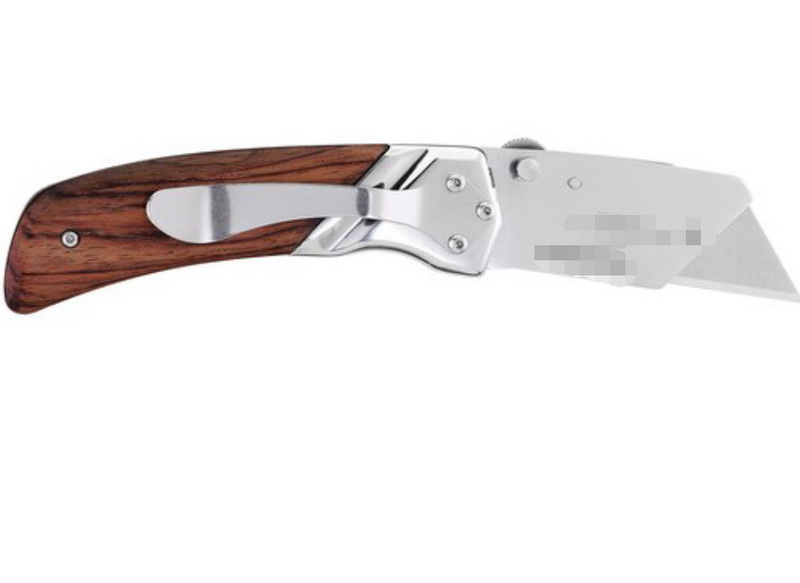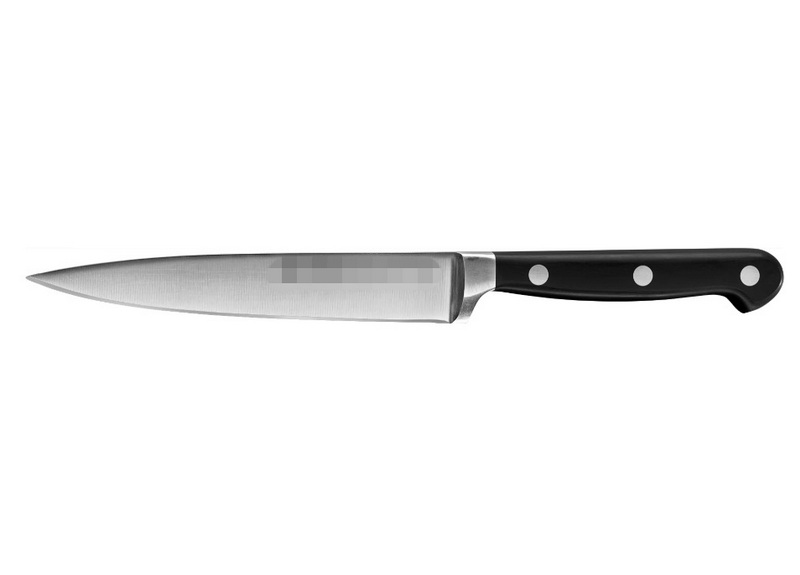- All
- Product Name
- Product Keyword
- Product Model
- Product Summary
- Product Description
- Multi Field Search
Views: 222 Author: Ann Publish Time: 2025-10-21 Origin: Site











Content Menu
>> Key Features of Paring Knives
>> Key Features of Utility Knives
>> Varieties of Utility Knives
● Differences Between Paring Knife and Utility Knife
● When Should You Use a Paring Knife?
>> Specific Tasks for Paring Knives
● When Should You Use a Utility Knife?
>> Specific Tasks for Utility Knives
● How to Choose Between Paring and Utility Knives?
● Materials and Construction to Look For
>> 1. What is the main difference between a paring knife and a utility knife?
>> 2. Can a utility knife replace a paring knife?
>> 3. How often should I sharpen my paring and utility knives?
>> 4. Are paring knives suitable for cutting meat?
>> 5. What materials make the best paring knives?
In the world of kitchen knives, the paring knife and the utility knife often get compared due to their overlapping uses. If you're setting up your kitchen or looking to upgrade your knife collection, understanding the differences, advantages, and ideal uses of each can help you make the right choice. This article will delve into the features of the paring knife and the utility knife, offer guidance on when to use each, and help you decide which one suits your cooking style best.

The paring knife is a small knife with a plain edge blade that is typically 2.5 to 4 inches long. It's primarily designed for intricate cutting tasks that require precision, such as peeling fruits and vegetables, deveining shrimp, or trimming fat.
- Blade Length: Usually between 2.5" to 4" (6.5cm to 10cm)
- Blade Shape: Straight, narrow blade with a pointed tip
- Uses: Peeling, trimming, delicate slicing, precision work
Paring knives come in different styles to match varied kitchen tasks:
- Straight paring knife: The most common type, perfect for peeling and slicing straight cuts.
- Bird's beak knife: Curved blade ideal for intricate shapes and peeling round fruits.
- Serrated paring knife: Great for tomatoes or citrus where the peel is tough but the flesh is soft.
Each type serves a unique purpose and offers enhanced control for specific tasks.
The utility knife is a versatile mid-sized knife, generally between 4 to 7 inches long, bridging the gap between the paring knife and the chef's knife. It is used for tasks where a chef's knife might be too large and a paring knife too small.
- Blade Length: Around 4" to 7" (10cm to 18cm)
- Blade Shape: Narrower than a chef's knife but broader than a paring knife, often with a pointed tip
- Uses: Slicing sandwiches, cutting fruits and vegetables, trimming meat
Utility knives may come with different blade styles:
- Straight edge: For clean slicing of fruits, vegetables, and meats.
- Serrated edge: Helpful in cutting ingredients with tougher exteriors like bread, citrus, or tomatoes.
- Granton edge: Features small air pockets that reduce friction and help prevent food from sticking.
Choosing the right utility knife depends on the primary use in your kitchen.
| Feature | Paring Knife | Utility Knife |
|---|---|---|
| Blade Length | 2.5" - 4" | 4" - 7" |
| Blade Shape | Narrow, pointed tip | Narrower than chef’s knife, often pointed |
| Primary Uses | Precision tasks: peeling, trimming | Multipurpose slicing and cutting |
| Handle Size | Smaller, easy to grip for details | Larger handle for control in broader cuts |
| Weight | Lightweight for delicate control | Slightly heavier for cutting power |
The paring knife is ideal for jobs that demand accuracy and fine control. If you need to peel apples, devein shrimp, or create garnishes, the paring knife is your best tool. Its small size allows for better maneuverability and detailed work.

- Peeling fruits and vegetables such as apples, potatoes, and carrots.
- Deveining shrimp and shellfish.
- Removing seeds or eyes from potatoes or peppers.
- Creating decorative garnishes and cuts.
- Trimming fat or sinew from meat in tight spaces.
Use a utility knife when you need more cutting power than a paring knife but less bulk than a chef knife. It is excellent for slicing sandwiches, cutting fruits like melons or pineapples, and trimming fat off meats. It can serve as the go-to knife for many mid-sized cutting tasks.
- Slicing sandwiches or burgers.
- Cutting fruits such as melons, pineapples, or apples into pieces.
- Trimming fat and sinew off larger cuts of meat.
- Cutting vegetables for salads or stir-fries when a chef's knife is too large.
- Carving small roasts or poultry pieces.
When deciding between these two knives, consider the following:
- Cooking style: Do you prepare a lot of intricate fruit and vegetable dishes? The paring knife is indispensable. Do you require one knife to handle medium-sized slicing jobs? Go for a utility knife.
- Kitchen space and budget: If you prefer fewer tools, a utility knife can cover many jobs, but a paring knife offers precision that a utility knife cannot.
- Comfort and grip: Test the handle and weight in your hand. Paring knives are smaller and lighter, fitting better in small hands or for delicate tasks. Utility knives demand a firmer grip for heavier cutting.
Choosing the right knife also means selecting the best material and construction for durability and performance.
- High-carbon stainless steel: Offers sharpness, durability, and resistance to rust.
- Stainless steel: Generally affordable, corrosion-resistant, but may require more frequent sharpening.
- Damascus steel: Known for sharpness and decorative patterns; generally premium quality.
- Ceramic blades: Very sharp and rust-free but more brittle and prone to chipping.
- Wood: Classic look and feel, but requires maintenance to prevent cracking.
- Plastic or composite: Durable, low maintenance, often textured for grip.
- Micarta or G10: High-end synthetic materials known for durability and grip.
- Metal: Sleek and durable but can be slippery and cold.
Proper care will extend the life of your knives and maintain performance:
- Always hand wash with mild detergent and dry immediately.
- Avoid putting knives in dishwashers to prevent corrosion and handle damage.
- Use honing rods regularly to keep edges aligned.
- Sharpen knives using whetstones or professional services as needed.
- Store knives safely in knife blocks, magnetic strips, or blade guards to prevent dulling and injury.
- “A utility knife can replace all other knives.”
While versatile, it can't match the precision of paring knives or the power of chef knives in specialized tasks.
- “Paring knives are only for peeling.”
They can also prepare delicate cuts and detailed work, such as garnishes or small meat trimming.
- “The bigger the knife, the better.”
Larger knives can be cumbersome for small tasks. Choosing the right size for each task enhances safety and performance.
Both the paring knife and utility knife are essential tools in a functional kitchen, each with distinct advantages. The paring knife shines when precision and delicate handling are necessary, making it ideal for peeling, trimming, and detailed cutting. The utility knife acts as a versatile all-rounder, perfect for medium-sized slicing tasks and cutting foods too cumbersome for a paring knife but not needing the bulk of a chef's knife.
For most home cooks and professionals alike, owning both knives is an optimal choice to cover a broad spectrum of kitchen needs. When selecting either, emphasize quality materials, comfortable handles, and proper maintenance to ensure your knives perform well and last long.

The chief difference is in blade size and intended use; paring knives are smaller for precision work, whereas utility knives are mid-sized for versatile slicing.
A utility knife is versatile but lacks the precision control necessary for delicate tasks like peeling or intricate cuts.
Sharpen at least every 1-3 months with regular honing in between, depending on frequency of use.
Paring knives can trim small pieces or fat but are not recommended for cutting larger meat portions.
High-carbon stainless steel offers the best balance of durability, sharpness, and rust resistance.
The Ultimate Professional Knives for Halal Butchery in Middle Eastern Kitchens
Chef Knife Size Guide: Choosing Between 6″, 8″, 10″, And 12″
Custom Knife Handles: How To Design A Chef Knife That Fits Your Hand Perfectly
Chef Knife Surface Treatments Guide: From Polished Migaki To Damascus Patterns
Inside Our Professional Knife Sample Room: Quality You Can See
Universal Knife Block Buying Guide: Modern Acrylic & ABS Knife Holders for Professional Kitchens
Universal Knife Block: The Complete Guide To Modern, Hygienic Knife Storage
The Complete Guide To Red Handle Knife Sets: Style Meets Functionality in The Kitchen
Professional Knives for Halal Butchery And Middle Eastern Cuisine